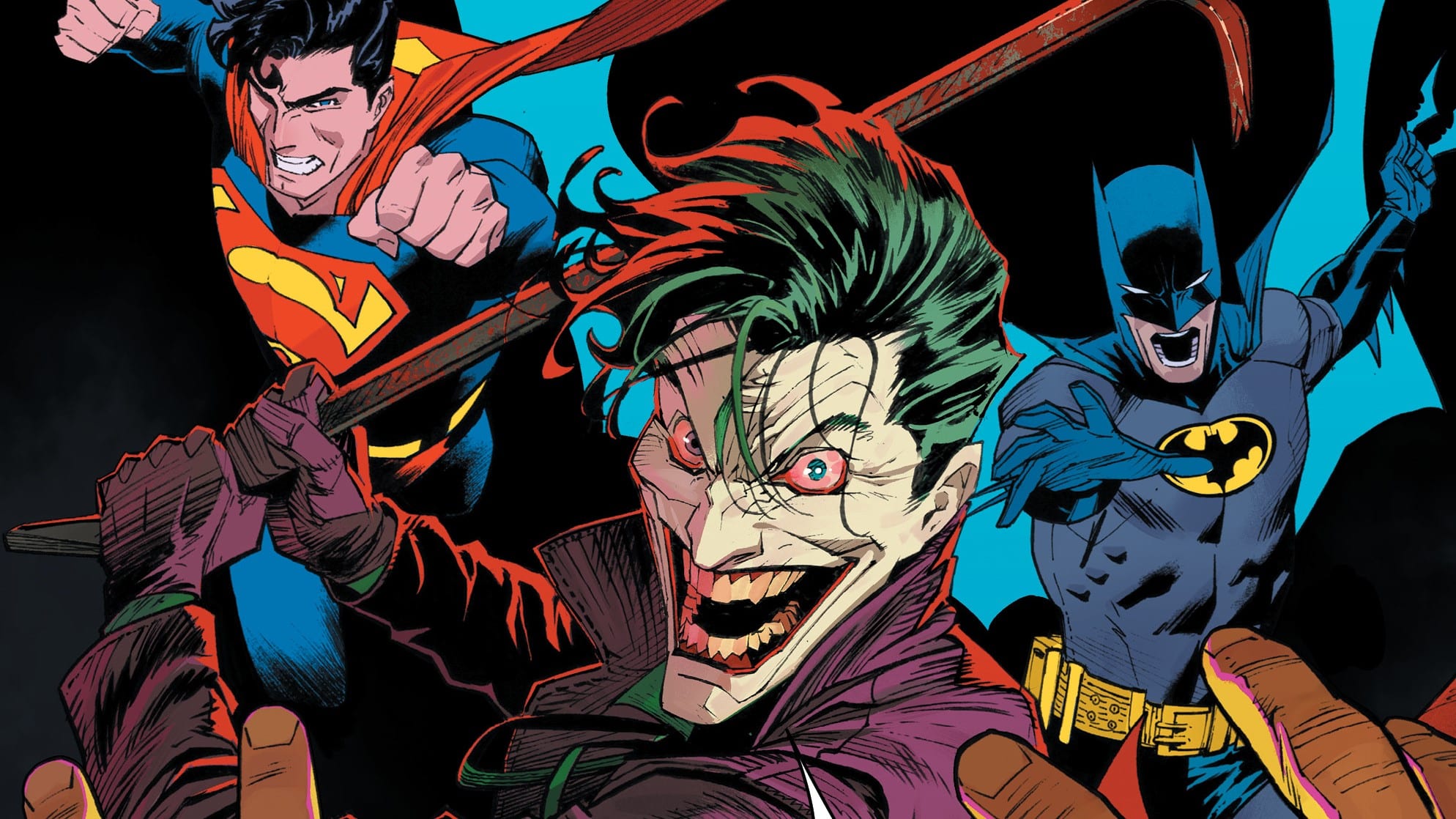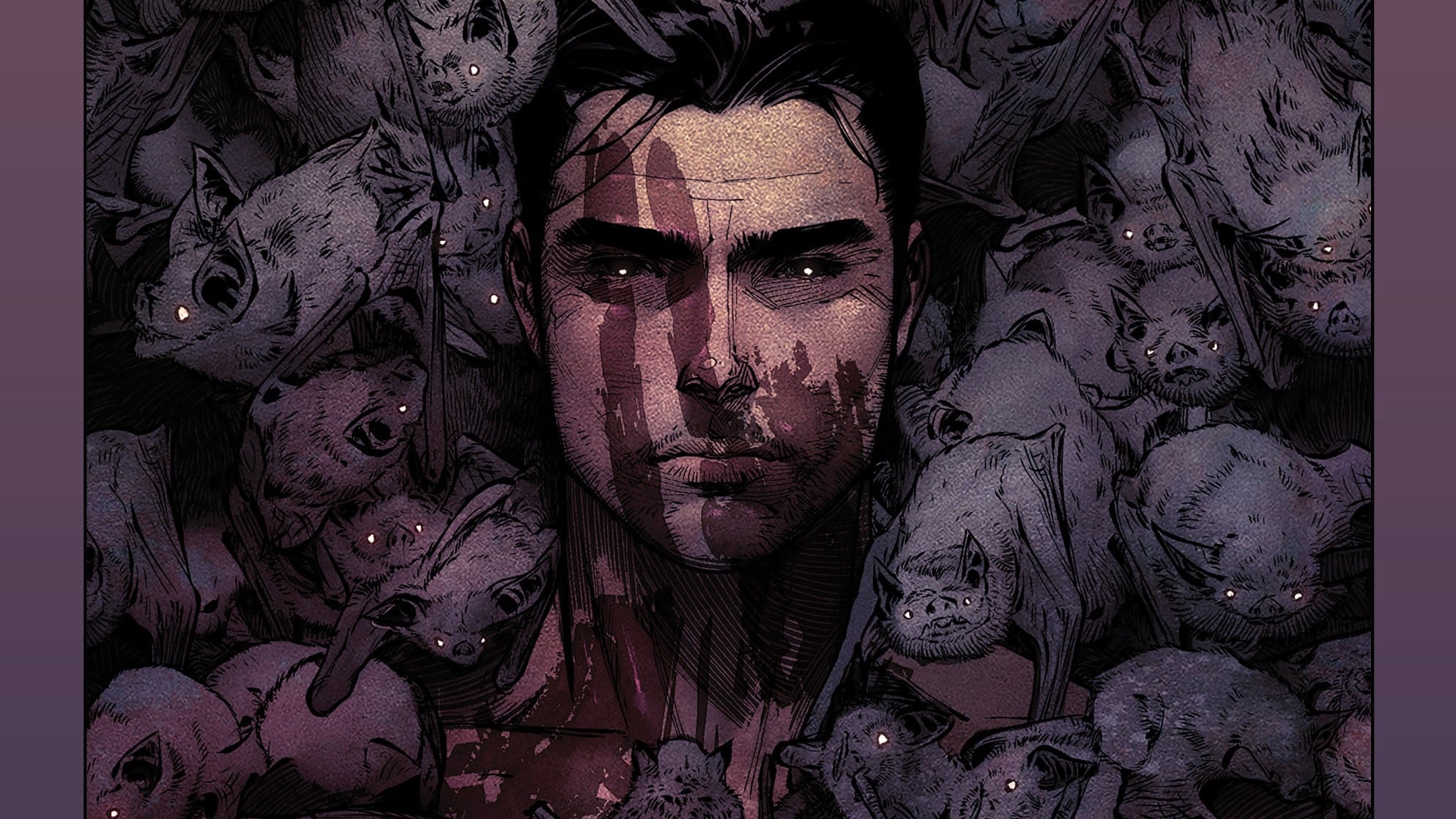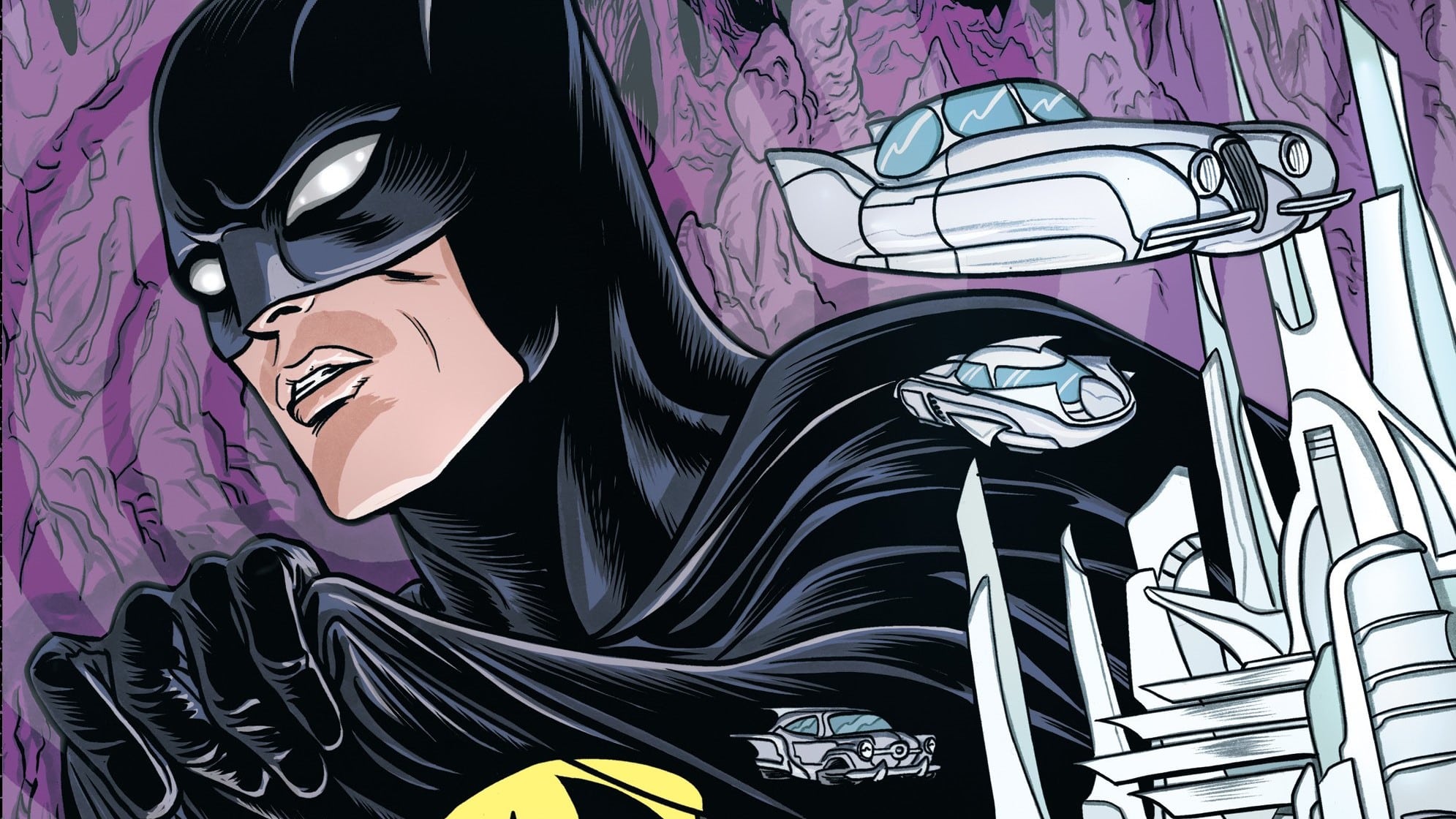Kid Thunder’s dark secret comes to light as the Joker and the Key make their move in Batman/Superman: World’s Finest #9, written by Mark Waid, drawn by Dan Mora, colored by Tamra Bonvillain and lettered by Steve Wands.
Is there redemption to be found for the supervillains of Gotham? Batman and Robin, early in their career, ask this question as they try to give Victor Fries a chance to save his wife, Nora, and find his way back into the (metaphorical) sun. Batman: One Bad Day — Mr. Freeze is written by Gerry Duggan, drawn by Matteo Scalera, colored by Dave Stewart and lettered by Deron Bennett.
Three rookies in the GCPD face racism, politics and the institutional nature of policing, while Commissioner Renee Montoya deals with her own isolation in GCPD: The Blue Wall #2, written by John Ridley, drawn by Stefano Raffaele, colored by Brad Anderson and lettered by Ariana Maher.
Will Nevin: We brought this up on the show, and certainly everyone anywhere has already talked about this, but it’s not a reason to not mention it once more: Gotham is a little bit darker this week.
Matt Lazorwitz: RIP Kevin Conroy.
World’s Finest

Matt: We say it every time, but it needs to be said yet again: This is the best looking superhero book on the market right now. Dan Mora absolutely kills every page of this comic.
Will: Kills it absolutely damned dead. Beautiful in every way, honoring the traditional versions of these characters while also making it feel modern. But let me get out a complaint about #8 before we get to this issue: I think Waid is once again taking storytelling shortcuts. In the last issue, the Key unleashes a toxin on Gotham that gives everyone the fear of doors and windows, meaning they’re trapped wherever they are for an indefinite period of time. Waid writes Batman and Robin as vulnerable to the toxin … even as Batman is explaining what’s going on. There’s *no way* Batman is going to be sidelined by a phobia. A real low IQ moment for the contrivance of not having Batman and Robin in the field for that particular scene.
Matt: Yes, I think Waid sometimes pushes the narrative aside for the cool, but … there’s a lot of cool. I don’t think you’ve read it, but I first encountered Waid during his run on The Flash, and so to see him writing Barry, and see Barry talk about Wally? That gets me. I like the scenes with the Titans in general. They act like teenagers, but he’s not writing them trying to use slang or seem “hip.” They’re just butting heads at times, and each has a distinct personality.
Will: Fine, fine, fine. Let Waid have his shortcuts. (I still think they’re lazy.) What do you think about Boy Thunder so far, and where do you think this is going? It’s going to have some kind of tragic end, right? What’s the opposite of plot armor?
Matt: Oh, even before he was taken by Joker and Key, this was going to end in tears. It’s the problem with setting things in the past and including new characters: You know they’re not around in the present, so they are made of plot tissue paper (I think that is the opposite of plot armor): They’re going to get blown away, it’s just a matter of how.
We see in the scene with the Titans that Boy Thunder isn’t too tightly wound, and as we learn the further source of his survivor’s guilt, well, even if he wasn’t going to get caught in a villain plot, he was far from the stable sidekick Superman wanted. Imagine Jason Todd at that age with super powers. That is much closer to what this kid was going to be.
One more note on Mora’s art: Good lord but the flooding of Gotham looks great. The little details of the cars, the way the water is roiling, the glimpses we get of our heroes saving the innocent. I love it.
Will: I will never not appreciate crazy detailed art. Just like I’ll never not criticize (or excuse, dear Matthew!) lazy writing.
Freeze

Matt: So, there are a few different Mr. Freezes out there. Not in the Clayface way, but more in the interpretation way. There’s the Batman: The Animated Series tragic Freeze, who loved his wife and who was a wonderful husband. Then you have the Scott Snyder version from the New 52 who was just obsessed with someone he never actually met. This seems to be seeking a middle ground between the two. Here, Victor Fries does love his wife, but even before her death his love turns to obsession and possessiveness. It does add a new dimension to the character, but as someone who loves Freeze as the more tragic figure (probably the second most tragic member of the Arkham set after Two-Face), I’m not sure how well it plays for me personally.
Will: I had the *very* same thought, that this was balancing the traditional tragic Victor Fries with the psychotically obsessed Snyder interpretation. I think I was with it until Duggan turned the subtext into text: “I like Nora now because we don’t argue” leaned a little too hard into this new version. But you know, if that’s our only complaint, this book was a success — as a good read, an interesting character study, as something that felt more essential than the previous One Bad Days.
Matt: Oh, this is head and shoulders above Riddler or Two-Face. I wish we had done Penguin, because I enjoyed that one as well, but back to the actual comic, I agree with your point. I feel like, to even maintain a degree of Freeze’s pathos, he has to truly think he’s doing the right thing here. And the minute he says something like that, he is conscious of the fact he’s a selfish ass and whatever sympathy you have for him is gone, because he’s at best a jerk who Nora should have left and at worst an absolutely abusive monster, and the narrative leans into that the more you learn about how he treated her.
Will: Which is an absolutely fine way to go with your story. But that more monster-y version of Freeze undercuts what seems like a happy ending. The guy who says that line — and the one who takes his dying wife to the cryo tank as she asks him why he’s doing it — is not the sort of guy to change, so the ending feels a little unearned.
Matt: That I can absolutely agree with. Freeze doesn’t seem to have any reason for this big character change. Yes, Robin saved Nora from being unfrozen, but the Freeze who really cares about that isn’t the Freeze who kept her from her friends. The Freeze of much of this is more of a, “If I can’t have her, no one will,” so why does he earn his redemption?
Also, while it’s a minor complaint, I felt like introducing Frostbite, Freeze’s moll, at the beginning and then forgetting about her was a missed opportunity. Giving Freeze someone who was as obsessed with him as he is with Nora seems like a good wrinkle, and was where I thought this was going when we first met her.
Will: Frostbite is an entirely new character? I figured she was in the canon somewhere. Odd decision, then, to bring her along and then completely drop her after that one scene.
Matt: Yup, completely new, which is why I thought she would be more than she was.
Matteo Scalera does an excellent job on the art here. The book is dark and moody without ever losing the character work you need to both empathize with and revile Freeze. And I love how Robin looks. He’s actually kidlike, and not just some tiny adult. He’s leveled up even further since that White Knight: Harley Quinn mini he drew, where his art was one of the few saving graces.
Will: So much Dick Grayson Robin this week!
Blue Wall

Matt: Will, you have tended to be harder on John Ridley for his dialogue over the course of our columns than I have. For me, this is probably the best thing he’s written for DC outside of The Other History of the DC Universe. We’re only two issues in, but it’s a character piece that is slowly fleshing out these three new characters as well as spending more time with Montoya than we have anywhere since Rucka’s Lois Lane series.
Will: This was actually good! And interesting! I’m worried that he might not have much real estate to tell his story given how fast things are moving, but these were some good reads.
Matt: This is an outstanding comic. The story is moving at a fast clip, I admit, but I’m OK so far with that. The stories of two of our rookies, Park and Wells, are weaving in and out of each other’s narratives, while Ortega starts to be involved with these cases at the end of the issue. If the stories get closer together as the narrative continues, I think there’s enough time for all of it.
I also feel like, while Ridley is calling out the same sort of social issues he does in I Am Batman, it all feels much more organic to the story here. The dialogue never seems forced, and while the characters are new, I’m already getting a good feeling for each of them.
Will: Ridley is much better here and feels more comfortable with a Gotham Central-style story in which the insanity of Gotham is only a background player.
Matt: It doesn’t hurt that Steffano Raffaele is a perfect fit for this book. He has that same crime comic style of your Michael Larks and Steve Liebers. And like those guys, he can still draw something of the macabre when he needs to. That is a really good looking Two-Face in that one panel.
Will: All of the visuals this week were solid. What a nice treat for us.
Bat-miscellany
- He’s possibly Batman’s grossest nemesis, although arguments could be made for Ratcatcher and Condiment King, I suppose, and one of the most powerful in some versions. He (She? They? It really depends on which version you’re talking about) is Clayface, the shape-changing walking mud person, and the focus of this week’s BatChat podcast.
- Always good to see some Matches Malone. I could use some more of him in the main titles.
- Dark Crisis: Worlds Without a Justice League: Batman #1 — What if post-apocalypse Memento and also Batman? Crazy concept with nice execution.
- Absolutely agree. Ryan Sook does a great job on art, and the story shows why, for Batman to truly work, he needs both the Batman and Bruce Wayne sides of himself.







